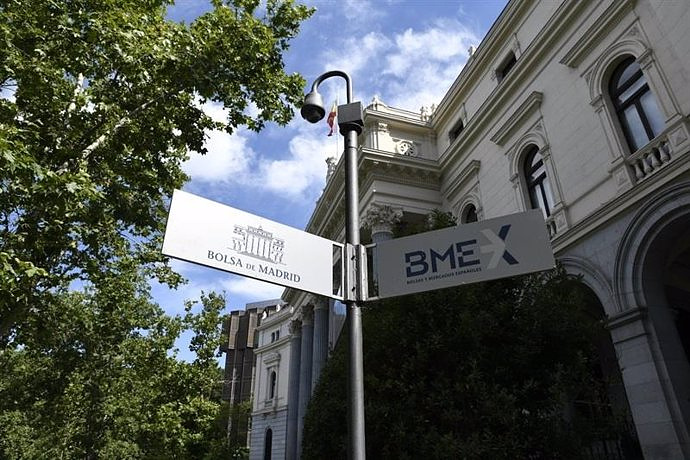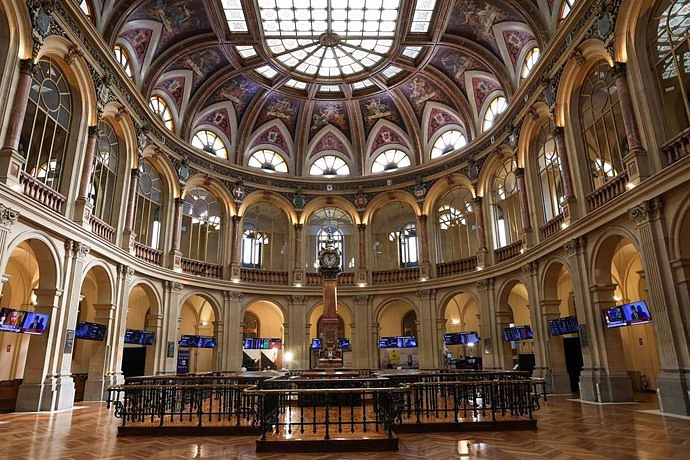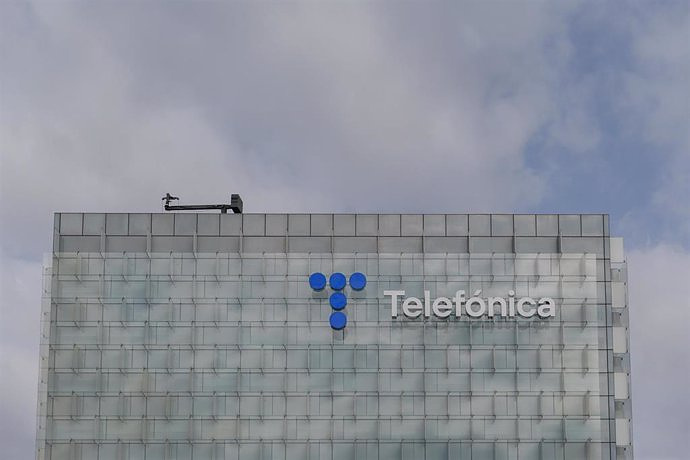On 7. May 2019BTC$5.890,00 3.53%Facebook Twitter LinkedIn xing mail
Not everywhere, where "Blockchain", is a public, decentralized transaction register. When it comes to the use of the Blockchain technology in business, often a marketing effective corruption of the term. You can't stress often enough that it is in the Blockchain technology, a special molding of a Distributed Ledger technology. On this circumstance, the authors of the Frankfurt School, "a decision aid for the use of Blockchain-technologies in business: Four Frameworks compared" at the beginning of your Papers.
– the title already indicates – compare Philipp Sandner and Daniel Höfelmann of the Frankfurt School, and Business solutions to a DLT-based. As evaluation criteria, the analysts define user-friendliness, efficiency, and Performance, based on cost efficiency, Release-ability and timeliness, security, and administration.
Installation and user-friendliness
points Here, both Ethereum as well as R3 Corda and Hyper Ledger Fabric. While in the case of Ethereum, especially the detailed documentation on GitHub to praise is mentioned, Hyper Fabric Ledger and Corda in the category of modularity points. So Hyper Ledger allows its modules (of which the Fabric itself creates a) a more targeted implementation, as this is, for example, in the case of Ethereum. Since Quasar is no public documentation exists, truncates this Underdog-DLT in this category.
(cost-)efficiency and Performance
Here are all four of the studied DLT roughly on a par. However, Ethereum is lagging behind in the field of the TRANS-action volumes in the competition – at least in its current Proof-of-Work-loft. Nevertheless, Hyper Ledger Fabric, R3 Corda and Quasar is available here no top reviews. The researchers justify their decision like this:
Quasar/Stellar, Corda, and Fabric call to higher values, however, have been documented in Corda and Fabric on the basis of the Research, this is only in very favorable selected and only from the respective manufacturers/consortia Tests. A testing and/or confirmation of the high volume of transactions by a third party, was for all the three systems are not accessible. In this respect, can be Quasar/certified Stellar, Corda, and Fabric, no positive values.
at Least were able to convince all four of DLT in the field of transaction fees. In the case of Ethereum and Hyper Ledger, the analysts of lower maintenance costs, since these networks over a larger Pool of developers than the competition:
In both cases, and can be selected from a large amount of external developers, what the pricing is influenced to be more positive. At Corda, and Quasar/Stellar, however, at least unclear, as the market matured and external developers with relevant experience.
Release-ability, and timeliness
In this category can Shine Ethereum. Particularly the large (developer-)Community is speaking here, for the head of birth Vitalik Buterins. However, the authors of the Papers Hyper Ledger Fabric, R3 Corda and Quasar/Stellar a better upgrade ability will attest.
security
here, Too, can Ethereum, as the only representative of a truly decentralised, public DLT points. Through the open source of the code, this is subject to the constant Review of a growing developer community. Here are the more completed systems, Hyper Ledger Fabric, R3 Corda and Quasar/Stellar can't keep up, by definition. However, the authors of the analysis point to the fact that there are on all of the platforms are still unresolved issues. This concerns in particular compliance with the data protection regulation (DSGVO). Especially in the area of data protection, the authors see mainly the developers of the respective (d)of the Apps in the duty.
administration
the situation is Different with regard to the management of each of the DLT. As regards interoperability, testability, and Logging, on Ethereum in the competition. What does not mean, however, that these Features were not in Ethereum integrate:
conclusionThis is mainly due to the fact that the three systems are designed per se for Business infrastructures and, therefore, its architecture is a higher level of interoperability and Features, such as testability and Logging. Nevertheless, the Blockchain, the adaptability of a permissioned these Features in Ethereum. Solely the initial cost is higher and this can be substantially higher.
The conclusion of the authors is a balanced approach. As Sandner and Höfelmann point them to security vulnerabilities that have arisen in the case of Ethereum due to faulty Smart Contracts and partial (DAO-Hack!) horrendous havoc. Although these weaknesses are not in the Ethereum-a Blockchain – founded, this fell even as-yet still no Hack for the victims. However, the DAO-Hack provides just an example of what can cause a weak-programmed Smart Contract for damages. In spite of everything, the two authors Ethereum to confess to the highest level of security:
a Total of Ethereum but it seems to short and medium term, the highest investment security: Ethereum is Open Source, has a large Community and at the same time a high level of global distribution. The investment in significant business processes on a self-or jointly with other actors controlled Ethereum-a Blockchain can be used with the highest probability for a long time.
However, in the case of Ethereum lower volume of data for some companies could be a criterion for exclusion.
So long for Ethereum is still in the Proof-of-Work algorithm to use, will change little. Ethereum wants to answer the scalability question with the change to Proof of Stake (PoS). This is, as yet, still on waitingn, I understand that the code base is for the PoS-algorithm, however, is nearing completion.
the other three DLT – Hyper Ledger Fabric, R3 Corda and Quasar/Stellar, it is the authors difficult, a clear "winner". For Hyper Ledger Fabric speak, therefore, above all, the commitment and the experience of the Linux Foundation as a patron of the project.
the Blockchain?
Last Sandner and Höfelmann raise the question of the meaningfulness of a private, "permissioned" DLT.
The great challenge of all the pure permissoned DLT solutions is the possibly loss of all the significant attributes, which are particularly attributed to the public block chains: the immutability of history, high level of security against many attack vectors, such as Sybil and Denial-of-Services attacks (DoS), as well as the network's inherent challenges, such as "Practical Bytzantine Fault Tolerance".
If a DLT solution and the unique outgoing characteristics of a public, "permissionless" Blockchain, you have to ask yourself as an entrepreneur, whether a changeover of business on DLT surrender any sense at all.
lost the essential attributes, the question is, why don't well-designed and technologically fully tested solutions should be used: This could be a centrally controlled platforms with rollers thought/rights principles, at probably a lower cost and higher availability of developers and System architects, and overall, a greater understanding in the entire organization.
Therefore, the concrete formulation of the desired target system for the decision-making process, as well as Watching the further development of Use Cases for private DLT and Ethereum is essential.
Bitcoin & Altcoins to buy: , crypto currencies, buy, sell, or trade – we have selected the best Broker, stock exchanges and certificates: buy Bitcoin | Ether buy | Ripple to buy | IOTA buy | Broker-comparison

 Exploring Cardano: Inner Workings and Advantages of this Cryptocurrency
Exploring Cardano: Inner Workings and Advantages of this Cryptocurrency Seville.- Economy.- Innova.- STSA inaugurates its new painting and sealing hangar in San Pablo, for 18 million
Seville.- Economy.- Innova.- STSA inaugurates its new painting and sealing hangar in San Pablo, for 18 million Innova.- More than 300 volunteers join the Andalucía Compromiso Digital network in one month to facilitate access to ICT
Innova.- More than 300 volunteers join the Andalucía Compromiso Digital network in one month to facilitate access to ICT Innova.-AMP.- Ayesa acquires 51% of Sadiel, which will create new technological engineering products and expand markets
Innova.-AMP.- Ayesa acquires 51% of Sadiel, which will create new technological engineering products and expand markets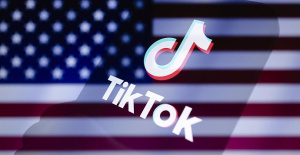 The US Senate approves a law that will allow TikTok to be banned if it is not transferred to another company
The US Senate approves a law that will allow TikTok to be banned if it is not transferred to another company Guilarte believes that Reynders was "naive" when negotiating the CGPJ with PSOE and PP and regrets that there has been no "progress"
Guilarte believes that Reynders was "naive" when negotiating the CGPJ with PSOE and PP and regrets that there has been no "progress" The PP asks the Government to "imitate the transparency" of France to clarify the spying on Sánchez with Pegasus
The PP asks the Government to "imitate the transparency" of France to clarify the spying on Sánchez with Pegasus 90% of the largest charter schools in Spain charge "illegal" fees, according to an Esade report
90% of the largest charter schools in Spain charge "illegal" fees, according to an Esade report How Blockchain in being used to shape the future
How Blockchain in being used to shape the future Not just BTC and ETH: Here Are Some More Interesting Coins Worth Focusing on
Not just BTC and ETH: Here Are Some More Interesting Coins Worth Focusing on Looking for video games that value the neighborhoods of Valencia
Looking for video games that value the neighborhoods of Valencia UPV researchers improve the efficiency of air conditioning systems using a geothermal heat pump
UPV researchers improve the efficiency of air conditioning systems using a geothermal heat pump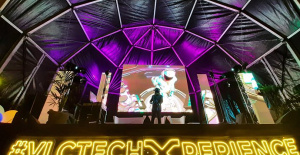 València is committed to citiverse and smart tourism to be "the reference technological hub of the Mediterranean"
València is committed to citiverse and smart tourism to be "the reference technological hub of the Mediterranean"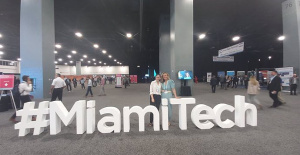 Valencia displays its "innovative and technological potential" at the Emerge Americas event in Miami
Valencia displays its "innovative and technological potential" at the Emerge Americas event in Miami A million people demonstrate in France against Macron's pension reform
A million people demonstrate in France against Macron's pension reform Russia launches several missiles against "critical infrastructure" in the city of Zaporizhia
Russia launches several missiles against "critical infrastructure" in the city of Zaporizhia A "procession" remembers the dead of the Calabria shipwreck as bodies continue to wash up on the shore
A "procession" remembers the dead of the Calabria shipwreck as bodies continue to wash up on the shore Prison sentences handed down for three prominent Hong Kong pro-democracy activists
Prison sentences handed down for three prominent Hong Kong pro-democracy activists ETH continues to leave trading platforms, Ethereum balance on exchanges lowest in 3 years
ETH continues to leave trading platforms, Ethereum balance on exchanges lowest in 3 years Investors invest $450 million in Consensys, Ethereum incubator now valued at $7 billion
Investors invest $450 million in Consensys, Ethereum incubator now valued at $7 billion Alchemy Integrates Ethereum L2 Product Starknet to Enhance Web3 Scalability at a Price 100x Lower Than L1 Fees
Alchemy Integrates Ethereum L2 Product Starknet to Enhance Web3 Scalability at a Price 100x Lower Than L1 Fees Mining Report: Bitcoin's Electricity Consumption Declines by 25% in Q1 2022
Mining Report: Bitcoin's Electricity Consumption Declines by 25% in Q1 2022 Oil-to-Bitcoin Mining Firm Crusoe Energy Systems Raised $505 Million
Oil-to-Bitcoin Mining Firm Crusoe Energy Systems Raised $505 Million Microbt reveals the latest Bitcoin mining rigs -- Machines produce up to 126 TH/s with custom 5nm chip design
Microbt reveals the latest Bitcoin mining rigs -- Machines produce up to 126 TH/s with custom 5nm chip design Bitcoin's Mining Difficulty Hits a Lifetime High, With More Than 90% of BTC Supply Issued
Bitcoin's Mining Difficulty Hits a Lifetime High, With More Than 90% of BTC Supply Issued The Biggest Movers are Near, EOS, and RUNE during Friday's Selloff
The Biggest Movers are Near, EOS, and RUNE during Friday's Selloff Global Markets Spooked by a Hawkish Fed and Covid, Stocks and Crypto Gain After Musk Buys Twitter
Global Markets Spooked by a Hawkish Fed and Covid, Stocks and Crypto Gain After Musk Buys Twitter Bitso to offset carbon emissions from the Trading Platform's ERC20, ETH, and BTC Transactions
Bitso to offset carbon emissions from the Trading Platform's ERC20, ETH, and BTC Transactions Draftkings Announces 2022 College Hoops NFT Selection for March Madness
Draftkings Announces 2022 College Hoops NFT Selection for March Madness
